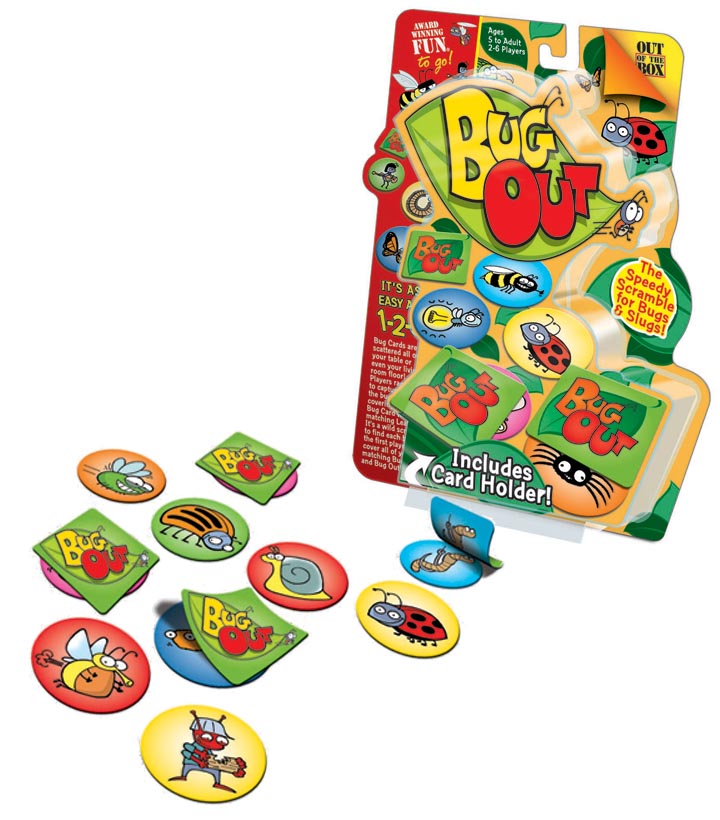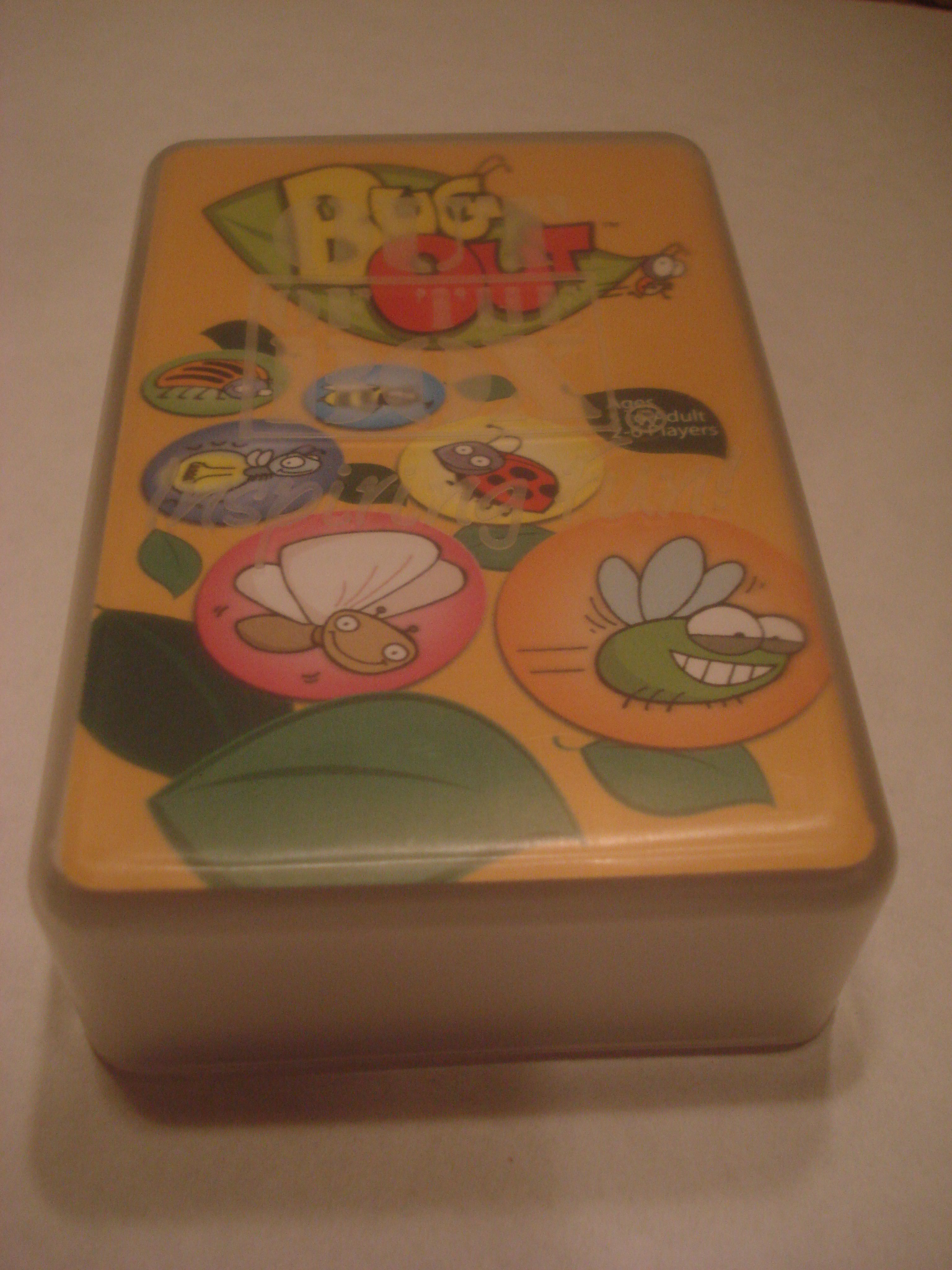| Publisher | Out of the Box Publishing Inc. |
| Design Credits | Brad Cross, with Max Winter Osterhaus, Ellen Winter, Al Waller |
| Art Credits | John Kovalic, Cathleen Quinn-Kinney |
| Game Contents | 36 Bug Cards, 36 Leaf Cards, rules, card case |
| Guidelines | Bug-based matching game |
| MSRP | $9.99 |
| Reviewer | Andy Vetromile |
During the summer months, keeping the bugs away is a daily chore, but at least now it’s a task found in convenient card-game format. Out of the Box Publishing has condensed the experience down to Bug Out, a fast-paced matching game to keep the kids on their toes. Literally, in fact, but let’s start by laying out the, er, ground rules (both jokes that make more sense by paragraph four). The object of the game is to be the first player to empty his hand of Bug Cards.
The game comes with a deck of 36 square Leaf Cards and a set of matching, circular Bug Cards. Each player receives a hand of the Leaf Cards while the circles are scattered across the table. When someone gives the word, everyone starts pulling cards out of the deck in their hand and trying to lay them on the table. Since each leaf has a corresponding bug, the player has to locate the match on the table and cover one with the other. The first player to draw all his cards, lay them on the appropriate bugs, and call “Bug Out” is the winner. Having finished Bug Out, the participants can now spread the action out with BIG Bug Out. The game plays the same, but now the bugs are dispersed throughout the entire room on the floor. It runs just the same as before, but now players must traverse the room, maneuvering around each other, to find the right card.
Good things come in small packages, and in this case the package itself is pretty nifty. It starts in a larger, more colorful blister pack, but that’ll get thrown away. The whole caboodle fits into the plastic card case with the Out of the Box logo and motto raised from its surface. Inside, everything fits snugly (technically the contents benefit from having their little cardboard insert that cuddles up to the different “card” sizes). It’s disappointing to find how thin those cards are – little their feet may be, but kids are going to tread on the pieces sooner or later. (Were they not made of that stock, though, 72 cards probably wouldn’t fit in the hip little case.) The rules are brief (in fact they’re 26 words long and appear twice on the blister pack), and the delightful illustrations are not just a successful tango between similar color schemes and deceptively unobvious matches, they’re another win for artist John Kovalic.
Bug Out sidesteps the age gap, because Mom and Dad may find their skills aren’t what they thought they were – once the furor is in full swing, finding matches isn’t as easy as it looks. Therein lies one problem, that if someone does make a mistake and covers someone else’s bug it’s unlikely anyone else will catch it at the time and almost impossible to figure out the guilty party later. Even the perpetrator may not realize it in the heat of the hunt… This does makes it a fine fit for all age groups, though, since that kind of skill at association can vary widely regardless of demographic. If someone turns out to have more on the ball than anyone else, handicapping them is easy enough by weighing them down with more cards to match than their competitors. A small and unassuming piece, Bug Out is fun and has some of the hallmarks one looks for in a kids’ game like pattern recognition for the younger ones and a $10 price tag for the adults. Games take but a few minutes each so it can be played several times during an afternoon, though whether it’s engaging enough to hold the average five-year-old’s attention the whole day is something the family has to answer for itself. It can be played with as few as two or as many as six, allowing some intimacy between a parent and their child or some constructive anarchy with a whole passel of bug-catchers.



